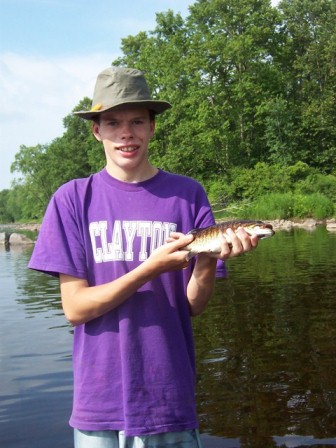I've received a lot of questions about the sediment release from the frac sand mine near Grantsburg, Wisconsin. One of the most common questions is "What's the big deal? It's just more sand in the river, right?" True, the river runs through some sandy country and some erosion is natural. But the accelerated erosion that occurs when vegetation is removed from these sandy soils is not good for the river. Sediment, including that from the settling ponds at the frac sand mine, often includes finer particles such as silt and clay. It's this accelerated erosion and sediment discharges that are not good for the river.
What's so bad about sediment? Well, while it is still in suspension, it makes the water cloudy. If you were a fish, a sudden sediment discharge would be akin to finding yourself in a dust storm. It makes it hard to see and hard to breath. Sediment can clog fish gills and scratch their eyes and skin making them vulnerable to infection.
But that is just the beginning. As sediment settles out of the water, it can damage fish spawning and mussel beds. Small-mouth bass, a favorite game fish, needs clean sand and gravel bottoms for spawning. In many places along the St. Croix, a clean sand and gravel riverbed is the natural condition and it supports a good small-mouth bass fishery. Add more sand, silt, and clay to the system and you've altered it to something the smallmouth bass can no longer use.

The native mussels of the St. Croix lay like jewels spread out across the cobble river bottoms. Sediment input hurts them, too. Scientists have been studying the same mussel bed near Interstate State Park since 1992 and have found that the amount of sand in that bed has increased by 30%. Over the same time period, the number of small mussels in the bed has decreased. There appears to be a link. More sand = low survival of juvenile mussels. As with any animal, if the young are not doing well, it should serve as a wake-up call.
The sediment discharge from the frac sand mine was dramatic, and thankfully, short-lived. Other sediment discharges to the St. Croix River are more insidious and long-standing. What are the other sources of sediment? What can you do? Watch for my next blog post.
